Text: malatsion | Section: Articles by Artists
Abstract: The installation works by the French artist malatsion make reference to biology, botany and medicine – also in a critical way. Nevertheless the sculptural creations come from her imagination; yet they are analyzed with scientific precision through drawing and photography. This article presents the installation © semons, gives insights into malatsion’s way of working and unfolds the ironic intention of the work.
A few words about myself: from 1992 to 1998 I did my degree in Art History and Archeology at the University of Poitiers. As an archeologist I specialized in archeozoology, a discipline that analyses animals remains (mainly bones) found at archeological sites. Afterwards, I studied at the Academy of Visual Arts of Marc Bloch University in Strasbourg, where I graduated in 2003. Since 2004 I’ve lived and worked in Frankfurt.
Science has influenced quite a few of my works as a source of inspiration. You can classify these works as science-related art. Right after my switch to the academy, my interest in science was for a while pushed into the background. It was only in 2008 that it re-emerged. Science is for me above all a source of images which helps me create installation works that remind their viewers of places such as the laboratory or of scientific methods such as the experiment.
Since I started to work on © semons in 2008, several of my works have found their origin in ethical questions from the field of biotechnologies. They consequently make a visual reference to biology, botany or medicine. However, this visual reference is limited to links and allusions, for example through stage props and objects. In the center of every installation, there are carefully handmade objects which I create and consider as sculptures. In their form, material and color, they are not realistic representations, but creations of my imagination, inspired by natural forms as well as by design and consumer goods. Staging them in a specific way makes them become the object of a fictitious scientific process. In this way, they are given a specific meaning. Besides, every handmade object is documented and analyzed during or immediately after its production process, photographically or in a drawing – it is thus submitted to an examination procedure that visually imitates scientific methods.
The pictorial results help create and maintain the fictitious scenario, even if they just interpret specific features of scientific images (for example diagrams, or images taken with the scanning electron microscope). They do not represent new knowledge, but rather attempt to deepen the viewer’s perception. With every new work I develop a new language of forms which appeals to the viewers’ senses and emotions and suggests an intuitive and non-discursive way of thinking. Paradoxically, what I am interested in when I try to challenge science through ethical questions is not so much the intellectual discourse, but rather an empathetic, senses-led feeling for the alteration and exploitation of nature, which can result in a total loss of its essence, of its original being.
In this article, I will present the first of my so far three science-related works. During the creation process, I reflected a lot upon questions that concern the respect for life, especially in the context of scientific research: is it, for instance, morally acceptable to treat living beings in a laboratory as mere scientific material, to consider a genome as a building site and to patent organisms?
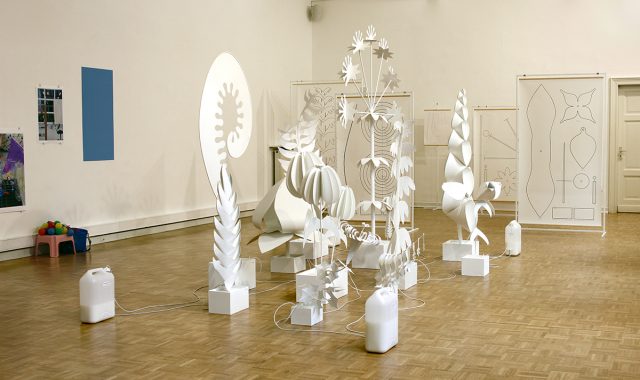
In the spacious sculptural installation © semons there are various stylized plant objects in square pots that form a peculiar forest scenery – all in white. The cool design objects look like products from laboratory experiments, fed with a white liquid coming from canisters. The single elements of each plant are both numbered and marked, like in a scientific experiment. Nearby, there are racks holding drawings of the single parts of each plant on a scale of 1:1. These drawings remind the viewer of botanical plates or technical diagrams. Furthermore they disclose the production process, just like a pattern chart.

The installation is the result of a longer reflection process, throughout which I considered the questions of modifying organisms and producing new ones. These questions implied others, about property rights on life. The background of my work is in this way the close link between science and industry. The title of the installation adopts the label written several times on every sculpture, which is the basic element of the scenario I want to stage: “semons” (French for “let’s sow”) is the name of a fictitious producer of the plant objects, who is concerned to hold the property rights on every plant form; it is all about reproduction rights. This visual exaggeration reveals my artistic approach. I make myself familiar with this serious topic by approaching it through an ironically designed universe of imagination which allows me to mix the rational and the grotesque, the aesthetical and the playfully staged.
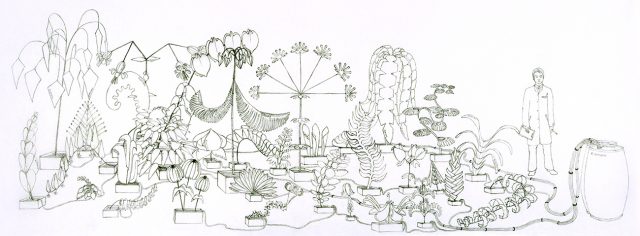
For the semons universe, I chose several structures and forms from my drawing studies of plants, ornaments and design and developed them further. I tried to stylize them, conferring them a high degree of artificiality, which is underlined by their white color, chosen here for its sterile aspect. Without being realistic, the sculptures are meant to be immediately perceived as plants. What is more, aestheticizing these forms makes them teeter on the edge of bad taste. This ambiguity of the outer appearance is a result of my ironical intention. I developed a mélange des genres, for which vegetative ornaments from popular culture (for example traditional floral motifs on textiles) and from mass production design are an important source of inspiration. Stylizing plant structures for me means schematizing and systematizing what can be observed in nature – the decorative is thus to some extent analytical. I am referring here to Karl Blossfeldt whose herbarium-like photographs of plants were designed to serve as precise models for the ornamental arts.
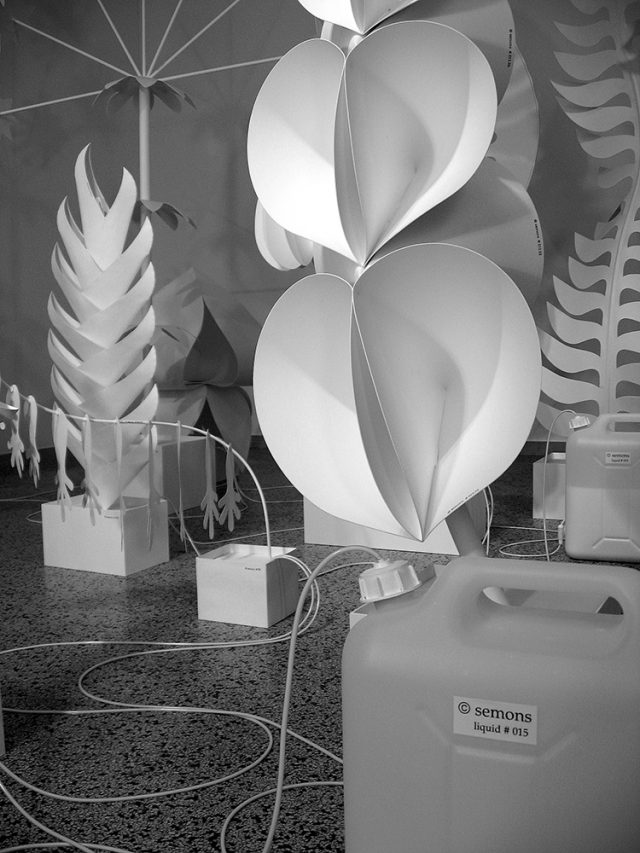
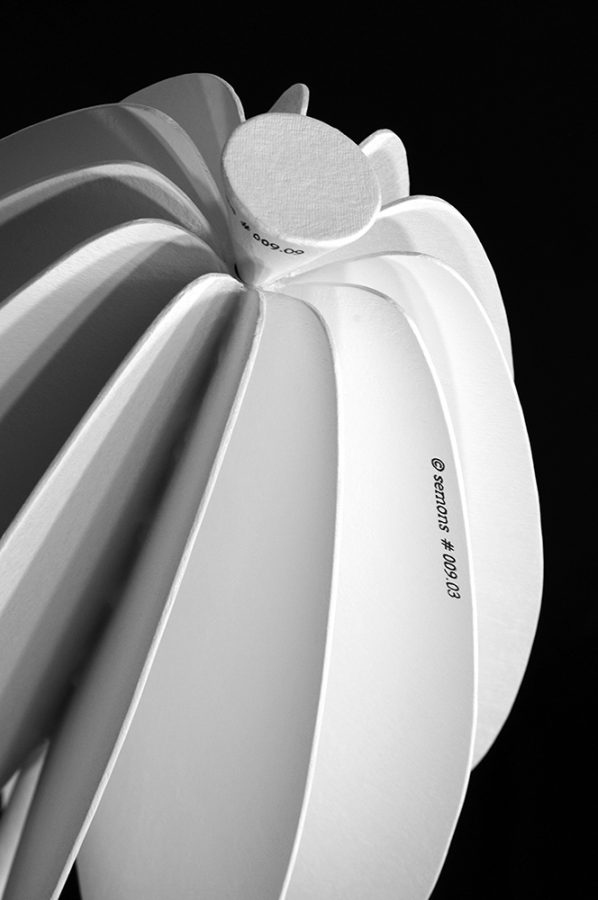
Wanting to stage the artificial organisms in the context of a fictitious laboratory or greenhouse, I chose only a few but all the more evocative props. In contrast to the voluptuous sculptural forms, there is this fake-functional irrigation system composed of canisters and tubes, which makes the plants appear like research objects. Additionally, numbering the single parts and marking them with the semons copyright transforms them into prototypes of laboratory products. These little details are not the only elements that hint at the collaboration between science and industry: the drawings on the stands, which form the second part of the installation, do so as well.

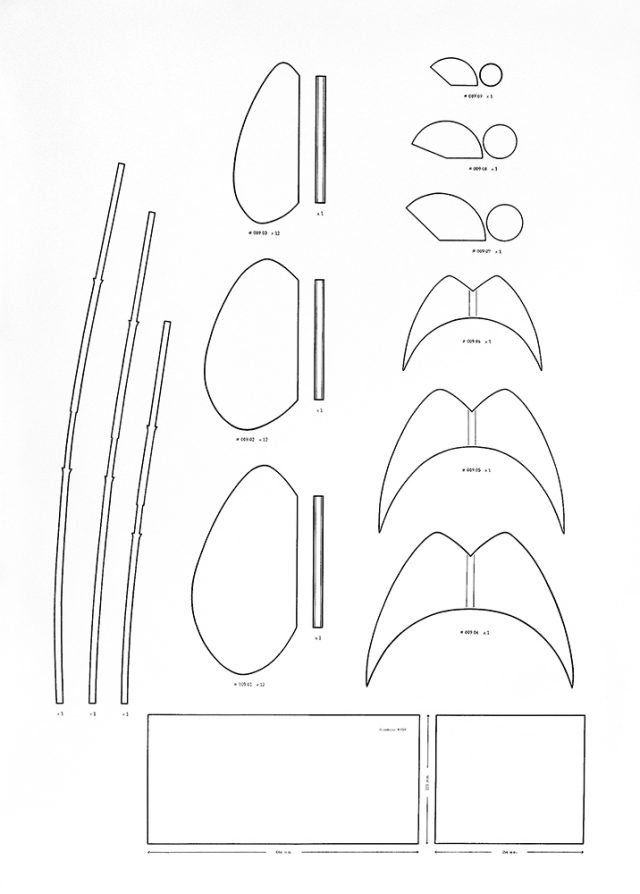
In the semons world, all these freehand drawings form a corpus of design patterns for mass production. They are conceived as object studies, just like botanical plates with all the individual parts of a plant, or like graphical representations of artefacts. Working on these drawings, I really get quite close to scientific methods. While producing the sculptures I already start feeling the need to understand the complexity and the combination of the forms better and to document them graphically. The object I am creating is thus immediately examined, and it then exists in two complementary versions, as a sculpture and as a drawing. As a whole, the sculpture offers the viewer an immediate sensual experience whereas the drawing dismantles the components and leads to an analytical understanding of the object.
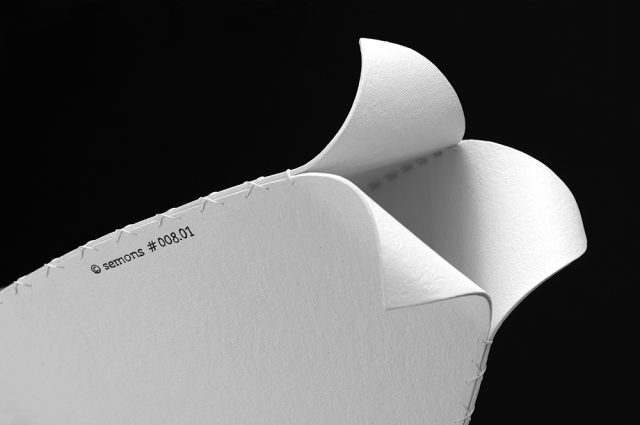
As you can see in the very precise finish of my objects, I attach great importance to the mode of production and to its process. Opting for handmade production, handwritten labelling and a material with a particular touch, I search for the look of the prototype, of the first experimental result, which still remains a bit uncertain and fragile.
Departing from ethical questions directed at science, I familiarized myself thoroughly with the research for industrial production. In this context, my installation includes a booklet which presents every sculpture singularly, exploiting the seductive potential of aestheticizing photographical means, just like in industrial high gloss promotional brochures. Independently from this parodist approach, photography is for me another method of observing plant creations in their sensual and technical details.
malatsion: © semons # 012 (2010). Photograph by Sabine Lippert.*
In short, I work on the two closely interlaced levels of laboratory fiction and artistic study. The observation work creates a distance between the viewer and the fictitious scenario and reveals the mechanisms of the latter, just as play and irony do. Furthermore, observing and analyzing how and what I produce helps me question the act of creation in art as well as in science. On the level of fiction, the ambiguity of the language of forms allows me to leave the work undefined – it can thus be perceived as a positive vision, a utopia, as well as a dystopia.
Translation: Laura Strack.
Picture above article: malatsion: © semons # 010, technical drawing (2010). Felt tip pen on paper, 72 x 65 cm. Photo: malatsion.
* Presentation in the booklet, object height 183 cm.
How to cite this article
malatsion (2017): malatsion: Laboratory Fantasies. w/k–Between Science & Art Journal. https://doi.org/10.55597/e2408
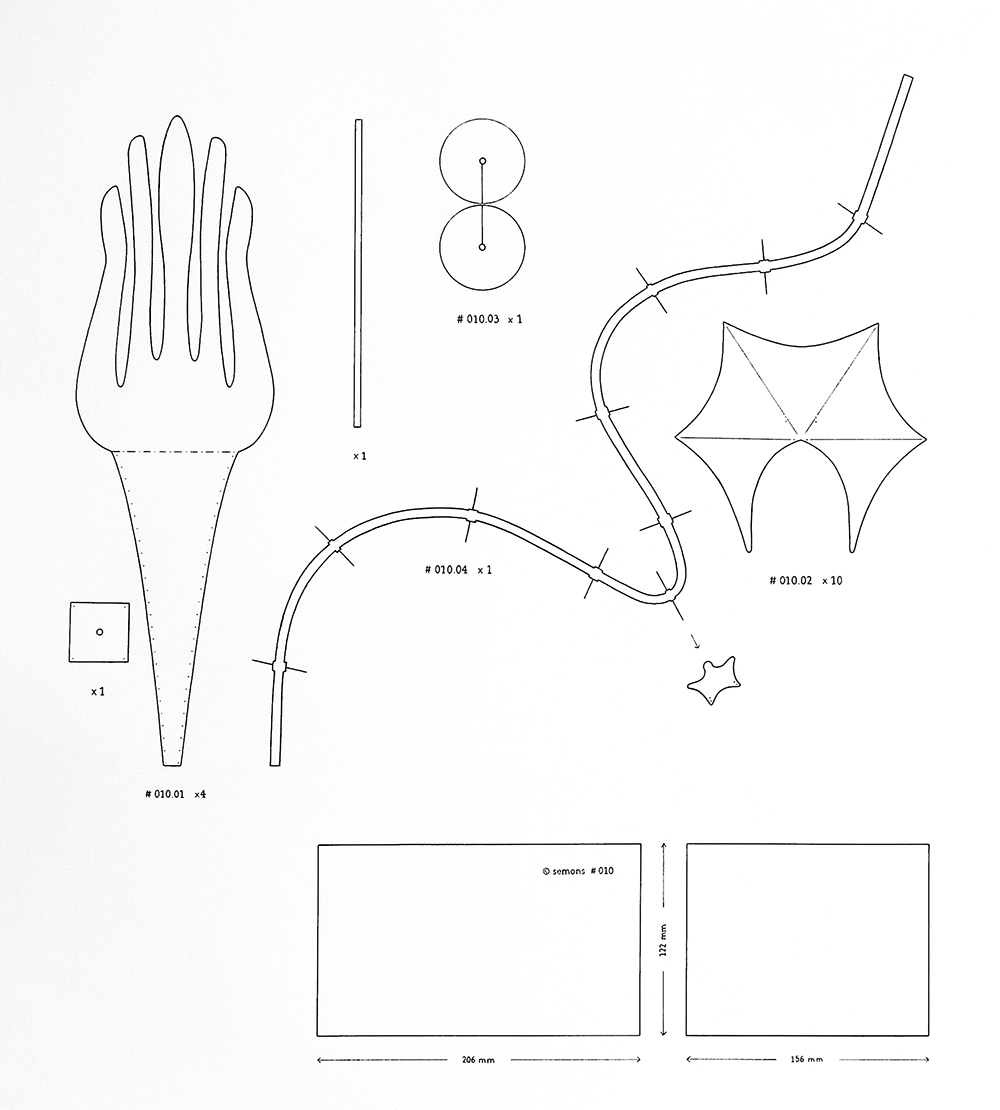

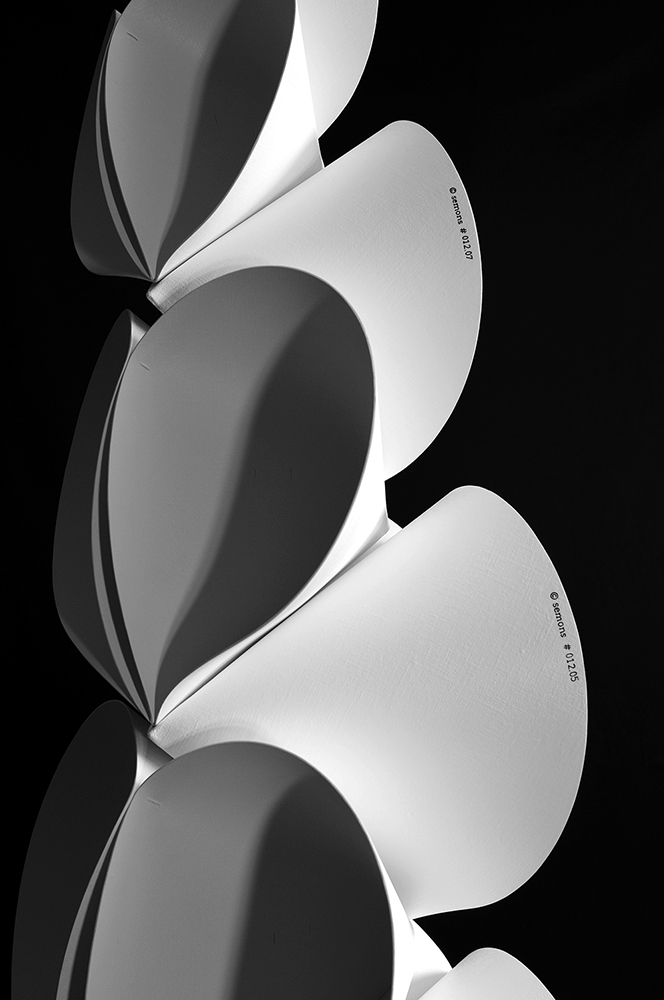


Be First to Comment